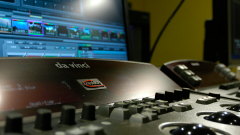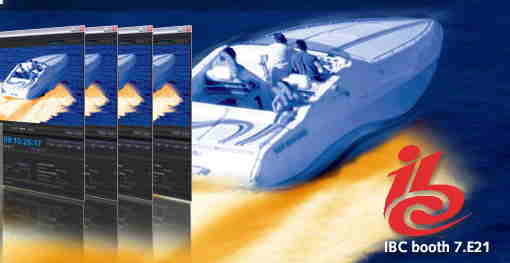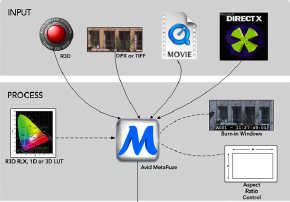
Parade Display for Colorists
When color correcting video, nothing beats the real time RGB parade waveform view. You can see the color balance in blacks, mids and whites, so it’s easy to balance colors and get your images looking perfect. RGB Parade is also perfect for checking for illegal colors because any video that drops below the black line, or above the 100% line is an illegal RGB color. Parade can also be switched to component so you can align equipment and decks. Waveform Display for Alignments
When adjusting video levels or matching black background levels when keying, the waveform display is ideal for this task! Waveform view has a setting that’s luminance only or composite. Composite video is synthesized from the SDI input, and is a much better view for aligning traditional equipment such as decks. Thousands of editors know and understand composite waveform monitors, so even though UltraScope is all digital, the synthesized composite waveform makes life a lot easier! Component Vectorscope View
A vectorscope is the only way to see what color you have. When color correcting video, sometimes you need to know color has been removed or nulled out for accurate white balance, and vectorscope view is perfect. Sometimes when color correcting you also need to apply a tint, and vectorscope lets you see exactly how much tint you’re adding, and what color it is. Sometimes monitors cannot be trusted, but a vectorscope always shows the colors you have! Of course aligning hue on decks is always easy with vectorscope view! Histogram for Location Shoots
Almost all video need to be color corrected at some point in the post production process, and so you never want to clip video whites or blacks when on a live shoot. If you clip the blacks and whites, you loose all detail later in post production when you try to adjust blacks up or whites down. Histogram view lets you see where the pixels are in your video, and how they are distributed from black to white. You can see if video is clipping, and then it’s easy to adjust the camera to keep all black and white detail in the image. Later in post production you then have the full contrast range of video for easy color correction that lets you keep all details no matter how extreme the color grade is! Audio view for Monitoring Levels
Keep track of your audio levels at all times with 8 channels of audio metering, plus a stereo phase meter. The stereo phase meter plots left and right audio, as an XY scope display so you know exactly what your audio is at all times. Audio scope lets you see mono audio, as you see a vertical line, or when you have stereo audio you will see the scope puff out in all directions! Audio problems are easily seen such as clipping, and out of phase audio can be seen as a left or right leaning display. If you don’t get a perfect vertical waveform, then you know you audio channel balance is out! No audio problem can hide from audio scopes! Picture View with VITC Timecode
The picture view lets you keep track of the video input so you always know what’s going on and what video input is connected into your Blackmagic UltraScope. Input video is selected from either the optical fiber SDI or regular SDI inputs, and the video standard is automatically detected and displayed above the video image. VITC timecode and RP188 HD timecode is also detected and read into a timecode counter on the top right of the video image.
High end post production and television engineers have known for decades the benefit of using waveform monitoring not just for engineering, but operationally in color correction and editing workflow. From color correction to matching black levels when keying and overlaying video, only waveform monitoring lets you keep track of what’s going on, and helps you eliminate illegal colors, and other problems that could cause your work to be rejected by broadcasters.
Of course, waveform monitoring is the best way to impress your clients and let them know that you’re keeping on top of quality in your work! Full PR write-up on BlackMagic Site: Blackmagic Design: Blackmagic UltraScope





